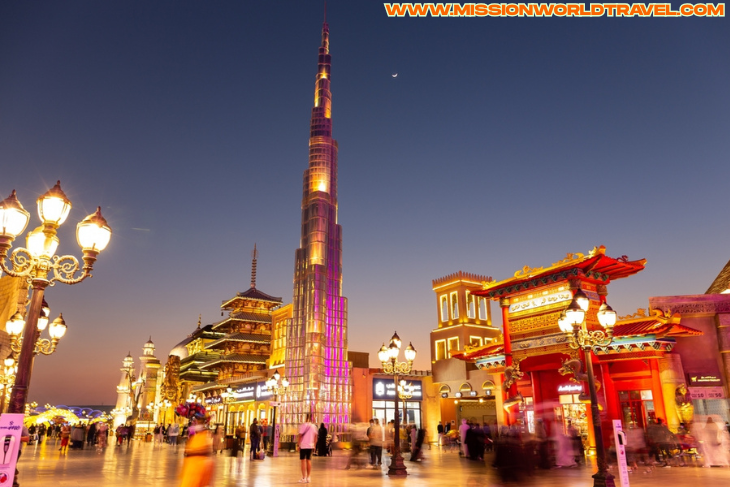
The Best Time to Visit Dubai depends on the kind of experience you seek in this vibrant city, where futuristic attractions meet traditional charm. From iconic skyscrapers to serene desert landscapes, Dubai’s appeal lasts year-round, but each season offers something unique. Weather conditions and local events can greatly shape your itinerary, so knowing the best time to visit ensures a more enjoyable, comfortable, and memorable journey.
Why Timing Matters
Dubai offers spectacular attractions throughout the year, but its desert climate can be extreme. As a result, the season significantly influences your travel experience. Scorching summers often limit outdoor activities, while cooler months allow you to explore the city comfortably. Additionally, key events and festivals take place during specific periods, enriching your travel itinerary even more.
Best Time to Visit Dubai: November to March – The Peak Travel Season
Undoubtedly, the best time to visit Dubai is during the cooler months, from November to March. During this period, the weather stays pleasant, ranging between 17°C (63°F) and 30°C (86°F). Because of these comfortable temperatures, this season is perfect for outdoor adventures. For example, you can enjoy desert safaris, beach days, and walking tours around Old Dubai. Therefore, many travelers prefer visiting during these months to make the most of their trip.
In addition to the favorable weather, several iconic events take place during this period. For example, the Dubai Shopping Festival, held from December to January, transforms the city into a retail wonderland. Equally important is the Dubai Food Festival, which celebrates the city’s culinary diversity with pop-up restaurants and gourmet experiences.
Furthermore, this season is perfect for beach lovers and sun-seekers who want to relax by the Persian Gulf without battling intense heat. Since the city is bustling during these months, travelers are advised to book flights and accommodations well in advance to avoid inflated prices.
Best Time to Visit Dubai: April and October – The Perfect Shoulder Seasons
If you’re looking to avoid the crowds but still enjoy relatively comfortable weather, consider traveling in April or October. These months serve as a bridge between the peak season and the extreme summer. Although daytime temperatures start to rise—reaching up to 35°C (95°F)—evenings are still tolerable, allowing for some outdoor exploration.
One major advantage of traveling during the shoulder season is that hotel rates and airfares are usually lower. Therefore, you can enjoy luxury without stretching your budget too much. Additionally, tourist spots tend to be less crowded, making sightseeing more enjoyable and personal.
Moreover, many water parks and resorts offer discounts during this time, making it ideal for families and budget-conscious travelers. Although some outdoor activities might be limited during the hottest part of the day, indoor attractions like the Dubai Aquarium, Ski Dubai, and The Green Planet remain enjoyable throughout the day.
May to September: The Off-Season
While May through September marks Dubai’s low travel season due to extreme heat—often exceeding 45°C (113°F)—it’s not entirely off the table for travel. For budget travelers and indoor explorers, this period can still offer a unique experience. Because tourism is at its lowest, you’ll find steep discounts on luxury hotels, fine dining, and even spa treatments.
However, it’s important to plan your itinerary carefully during these months. For instance, limit outdoor activities to early mornings or late evenings, and rely heavily on Dubai’s well-developed indoor entertainment options. The city is designed to cope with the heat, with air-conditioned malls, metro stations, and attractions at nearly every corner.
Additionally, the Dubai Summer Surprises, a shopping and entertainment festival held between June and August, provides another reason to consider visiting during this time. Although temperatures soar, this event offers unbeatable deals on products, entertainment, and hotel stays, making it worth your while.
Best Time to Visit Dubai: Ramadan Considerations
When planning your trip to Dubai, you should also consider the Islamic holy month of Ramadan, which varies every year. Consequently, many restaurants and cafes remain closed during the day. Although tourists are allowed, there are important rules about eating, drinking, and dress in public. Therefore, visitors must respect these customs to avoid any issues. Overall, understanding Ramadan helps you enjoy your visit while honoring local traditions.
Despite these restrictions, Ramadan can be a culturally enriching experience. The city becomes more spiritual, and traditional events such as Iftar (evening meal) and Suhoor (pre-dawn meal) provide a deep dive into Emirati hospitality. Plus, many hotels and resorts offer special Ramadan packages that include elaborate Iftar buffets and cultural performances.
Best Time Based on Your Interests
For shopping enthusiasts, the best time to visit is between December and February, during the vibrant Dubai Shopping Festival. If you love outdoor adventures, plan your trip between November and March, when the weather is perfect for exploring. Budget travelers can take advantage of the off-season from May to September to find great deals. Those seeking cultural immersion might enjoy visiting during Ramadan or on National Day (December 2nd) to experience traditional Emirati culture.
Final Thoughts
In conclusion, while Dubai is a modern metropolis that dazzles year-round, the best time to visit depends entirely on your preferences, budget, and travel goals. If you prioritize comfort and vibrant events, the winter months from November to March are unmatched. On the other hand, if affordability and indoor activities appeal to you more, the summer off-season may suit your needs just as well.
Ultimately, with thoughtful planning and flexibility, Dubai promises a memorable journey regardless of the season. Whether you’re marveling at the Burj Khalifa, cruising through the Dubai Marina, or exploring ancient souks, your Dubai experience will be nothing short of extraordinary—provided you visit at the right time.



The Best Time to Visit Dubai perfectly highlights how the city’s weather and experiences align for unforgettable memories—great read!
Thank you so much! 😊 Dubai truly offers something magical year-round, but knowing the right season makes the experience even more memorable. Glad you enjoyed the read!